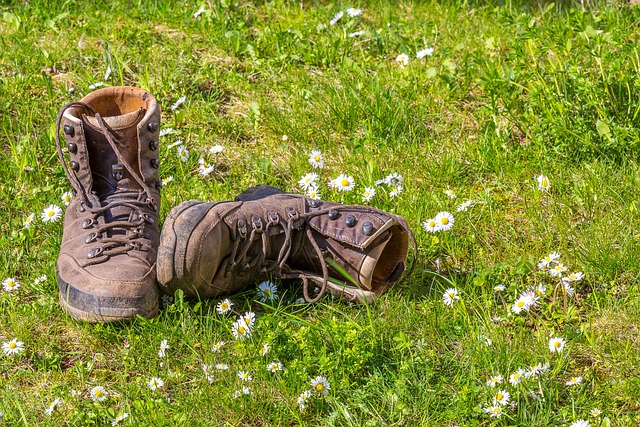Hiking is an enjoyable and rewarding outdoor activity that offers a great way to get exercise, explore the outdoors, and clear your mind. However, wearing ill-fitting hiking boots can quickly turn an enjoyable hike into a painful and uncomfortable experience. In fact, hiking boots that are too big can cause a number of problems, from blisters and foot fatigue to instability on uneven terrain and poor traction. That’s why it’s important to know how to tell if your hiking boots are too big and what steps you can take to ensure a good fit.
Some common signs that your hiking boots are too big include heel slippage, blisters, foot fatigue, toe banging, instability on uneven terrain, and poor traction. If you notice any of these signs, it’s important to take steps to ensure a better fit for your hiking boots to avoid discomfort and potential safety hazards.
In this article, I’ll go over the signs of boots being too big, how to measure your feet, and tips for ensuring a good fit. By the end of this article, you’ll be equipped with the knowledge you need to choose the right hiking boots for your feet and avoid common problems associated with ill-fitting boots.
How to Measure Your Feet
Before buying hiking boots, it’s important to measure your feet to ensure you get the right size. Here are 5 steps you can follow:
- Trace your foot: Place a piece of paper on a flat surface and stand on it with your heel against a wall. Trace the outline of your foot with a pen or pencil.
- Measure the length: Measure the distance from the wall to the end of the longest toe on your traced foot. This will give you the length of your foot.
- Measure the width: Measure the widest part of your traced foot. This will give you the width of your foot.
- Repeat for the other foot: Repeat steps 1-3 for your other foot, as your feet may not be the same size.
- Choose the right size: Use your measurements to choose the right size hiking boots. Keep in mind that different brands and styles may fit differently, so always try on boots before buying.
It’s important to measure your feet while wearing the socks you plan to wear while hiking, as this can affect the fit of the boots. Additionally, make sure to measure your feet later in the day when they are at their largest, as this is when you’ll want the most space in your boots.
Signs of Boots Being Too Big
Here are some common signs that your hiking boots are too big:
- Heel slippage: If your heel slips up and down in the boot when you walk, it’s a sign that the boots are too big. This can cause blisters and foot fatigue.
- Blisters: Blisters on your feet are a common sign that your boots are too big. When your feet move around too much inside the boots, friction can cause blisters to form.
- Foot fatigue: If your feet feel tired or achy after only a short distance of hiking, it could be a sign that your boots are too big. This is because your feet have to work harder to keep the boots in place, which can lead to fatigue.
- Toe banging: When your toes hit the front of the boots with each step, it’s a sign that the boots are too big. This can cause bruising and black toenails.
- Instability on uneven terrain: If your boots are too big, your feet can shift around inside the boots, making it difficult to maintain balance on uneven terrain.
- Poor traction: If your boots are too big, your feet may not be in contact with the sole of the boot properly, reducing traction and making it harder to maintain your footing on slippery or rocky surfaces.
If you notice any of these signs, it’s important to take steps to ensure a better fit for your hiking boots.
Tips to Ensure a Good Fit
Here are some tips to help ensure a good fit for your hiking boots:
- Try on boots with hiking socks: Make sure to wear the socks you plan to wear while hiking when trying on boots. This will ensure that you get a more accurate fit.
- Walk around in boots to check for comfort and fit: Walk around in the boots on different surfaces to get a feel for how they fit and if there are any pressure points. Make sure to try on boots in the afternoon or evening when your feet are at their largest.
- Consider break-in time for new boots: It’s normal for new boots to feel stiff and uncomfortable at first. Allow time for the boots to break in and mold to your feet before taking them on a long hike.
- Adjust laces and insoles for a customized fit: Make sure to adjust the laces and insoles to get a more customized fit. This can help to keep your foot in place and reduce slipping.
- Use inserts or thicker socks for a snugger fit: If you have a pair of boots that are slightly too big, you can try using inserts or thicker socks to fill in the extra space and get a snugger fit.
- Consider getting a professional fitting: If you’re having trouble finding the right fit, consider getting a professional fitting at a store that specializes in hiking boots. A professional can measure your feet and recommend boots that are the right size and shape for your feet.
Common Questions About Hiking Boot Fit
Here are some common questions about hiking boot fit:
1. Can I wear thicker socks to compensate for a larger size?
It’s not recommended to wear thicker socks to compensate for a larger size, as this can cause your feet to overheat and can also lead to blisters. Instead, it’s best to choose a boot that fits properly and wear the appropriate socks for the weather conditions.
2. Is it normal for hiking boots to feel tight at first?
Yes, it’s normal for hiking boots to feel tight at first. It can take some time for the boots to break in and mold to your feet. However, if the boots are extremely tight or uncomfortable, it’s a sign that they may be too small and you should try a larger size.
3. Can insoles help with an ill-fitting boot?
Yes, insoles can help with an ill-fitting boot. They can provide extra support and cushioning to help fill in the extra space and make the boot fit more snugly. Make sure to choose insoles that are specifically designed for hiking boots and provide the support and cushioning you need for your feet.
Conclusion
In conclusion, knowing how to tell if hiking boots are too big is a must for hikers. Choosing the right hiking boots is essential for a comfortable and safe hiking experience. Boots that are too big can cause a range of problems, from blisters and foot fatigue to instability and poor traction. To ensure a good fit, it’s important to measure your feet, try on boots with hiking socks, and walk around in them to check for comfort and fit.
Adjusting the laces and insoles can also help to customize the fit of your boots. If you’re having trouble finding the right fit, consider getting a professional fitting. By following these tips, you can ensure that your hiking boots fit properly and provide the support and comfort you need while out on the trail. Remember, a well-fitting hiking boot is essential for a safe and enjoyable hiking experience.








